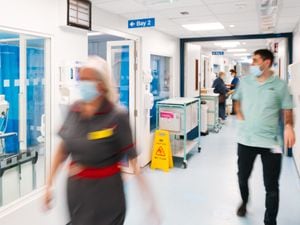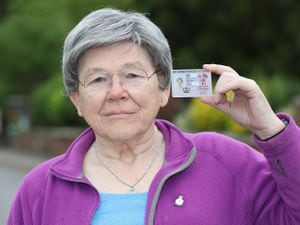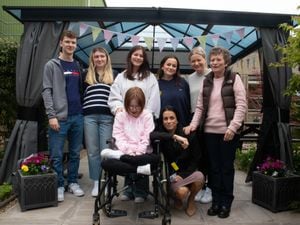Hospital's new unit helping to cut pressure on A&E – and get patients home quicker
An under-pressure hospital trust has revealed its latest unit being used to help tackle A&E pressure – and get patients home quicker.

Royal Shrewsbury Hospital (RSH), which is managed by Shrewsbury & Telford Hospital NHS Trust (SaTH), has been operating a new 'acute assessment floor' since the end of last year.
The idea behind the unit, which has seen staff heavily involved in its design – both physically and the way it operates – is to try and get patients to the right place for treatment as quickly and efficiently as possible.
Since opening it has seen more than 1,000 patients who would have otherwise been waiting in A&E at the hospital, helping relieve the pressure on A&E, which is one of the worst performing in the country.
While it is also helping take care of patients who do not need to be in A&E, it also has a dedicated discharge area, helping to free up beds by moving patients to another clinical area where they can wait for medication or final test results before they leave the hospital.
The impact of the area means some patients are leaving the hospital five hours earlier than they would otherwise.
Hannah Pope, matron of acute medicine at RSH, said that staff had come up with the idea for the discharge area, and they were pleased with how it was operating.
She said: "This came up out of a conversation last year and for us to be listened to and supported to make it happen is wonderful."
The entire unit has been refurbished with 14 trolley assessment spaces, nine monitored beds, and three assessment rooms.
The site also includes enhanced monitoring of patients – particularly with mobile cardiac monitors, which can be attached to patients and monitored from a central station, allowing people to move around while still wearing the equipment, unlike traditional stationary monitors.
One of the aspects of the new rooms is the inclusion of large, purpose-fitted windows, to allow staff to maintain observation of patients, and to improve the feeling of the area.
Patients admitted to the hospital through GPs no longer attend through A&E and are now directed to the unit instead.
Ms Pope said: "The patient is in the right place the first time, they are seeing the correct nurses, the correct doctors and they are in the correct place to move on to the next part of the patient journey."
She added: "Rather than sitting in A&E waiting to be seen they are seen here, first time."
Dr Aruna Maharaj, a consultant acute physician at the trust said they were pleased with the impact the unit was having so far, adding that its more comfortable seating and environment was beneficial to patients.
She spoke of the benefits of helping with patients who would otherwise be sat in A&E.
Around 100 staff are working at the unit across the day, with 20 new nurses set to start work there between now and April.
Ms Pope said: "The feedback from the patients was immediate. We had a patient in who had been through A&E the week before, and the next week went through the AMU and they could not believe the difference, so for us to hear that was amazing."
The creation of the unit comes against the background of SaTH having some of the worst performance against the government's four hour A&E waiting target.
For December the trust was the fourth worst in the country, when only 44.7 per cent of A&E patients at the hospitals were admitted, transferred or discharged within the government target of four hours.
Only Wye Valley NHS Trust with 44.3 per cent, Barnsley Hospital NHS Foundation Trust with 42.6 per cent, and Hull University Teaching Hospitals NHS Trust with 39.6 per cent, recorded worse performances on the target.
Sara Biffen, acting chief operating officer at SaTH, said the new unit was having an impact – but added that they know there is a long way to go to improve the performance against the targets.
She said: "What it has done is de-escalate our emergency department on the RSH site, which is great because obviously all of those patients, more than 1,000, would have gone through that department, which would have created a more overcrowded A&E than it is currently."
She said the unit was also allowing them to release ambulances more quickly, and cut handover times – both issues which have had a significant impact on ambulance cover in the county.
She added: "We have still got a long way to go. Our emergency departments are still very full, we have still got days where we are holding ambulances, and our ambulance handovers are longer than we want them to be."
Hayley Flavell, the trust's director of nursing, praised the input of staff in the creation of the unit.
She said: "Our staff are incredible in how they have driven this piece of work. The project has been so clinically-led from what the pathways look like to the fabric of the building."
She added: "It is absolutely not about the numbers, making sure we do the right thing for our patients, but most important is the patient experience.
"It is so important we get patients to the right place the first time.
"On the acute floor they go to a seated area, they are assessed by the right people at the right time to get to the right place. That should really streamline their care, so hopefully they have a much better patient experience."





